Ash trees account for sixty percent of Edmonton’s boulevard trees and thirty percent of city owned trees. Having that kind of population is what makes ash borers a major issue! While the emerald ash borer slowly makes its way west, there is already an ash borer in Alberta attacking our ash trees. If you’ve noticed your ash trees declining branch by branch with the bark becoming loose or peeling off, then there may be a lilac ash borer infestation. In this post we will tell you how to identify lilac ash borer symptoms and what can be done.
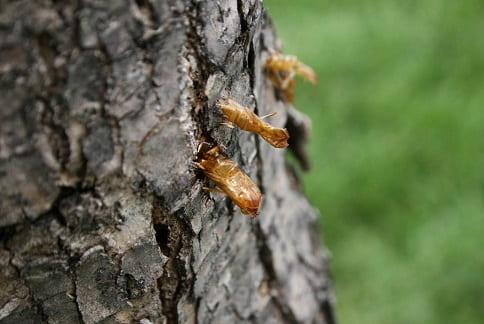
The Problem
Lilac ash borer or Podosesia Syringae is a wasp-like moth known as a clearwing moth due to its clear, webbed wings. It looks a lot like a stinging wasp but has a longer body, longer antenna, longer legs, and no stinger. The larvae are white grubs with a brown head. Ash borer lifespans and pupation cycles differ according to their environment. Lilac ash borers this far north will live for three years and spend almost all of that time as pupa inside ash trees. In June, the adult moths emerge from the tree looking for mates. The females live for about one week, spending most of their time laying around four hundred eggs in small clusters. These clusters are almost always laid in older bark with deep crevices or damage, such as cracks. The eggs are ovate and brown and take ten to fourteen days to hatch. Once hatched the young burrow through the bark and feed on sapwood for the summer, burrowing deeper into the heart wood for winter. They will feed on the heart wood for the second year, eating their way back to the surface after the second winter. In May, they will pupate for around twenty days just under the barks’ surface, emerging as adults in June/July.
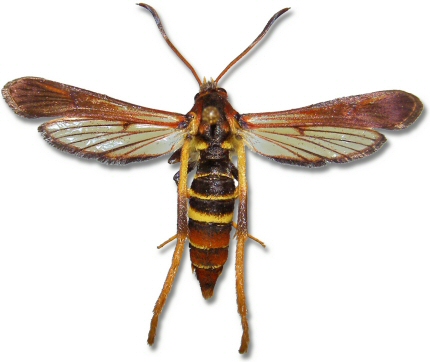

Lilac ash borer does not directly kill the tree but rather encourages decline through other means. Bored out trunks are easy to access for decay, fungus and disease, and the ruined structural integrity of the wood often causes failure at the bored-out point. Trees trying to survive borer attack will have less ability to stave off other stresses like drought or other parasites.
The Victims
Lilac ash borer target ash trees as well as lilac shrubs. There is less damage to lilac shrubs because they grow many stems, helping them outgrow infestation. Ash trees are the main target, with young, weakened ash trees being most susceptible. Green, black, and mountain ash are all at risk of lilac ash borer infestation.
Green ash is fast growing and can reach around 55 ft. tall and 25 ft. wide. They grow upward with a singular trunk and their branches grow opposite and upward leading to twigs that grow down then curl up and out. Young ash bark is smooth and greyish with red streaks, while mature ash bark is dark grey with diamond shaped irregular ridges. Green ash leaves are pinnately compound with 5-9 leaves coming off a single stalk.

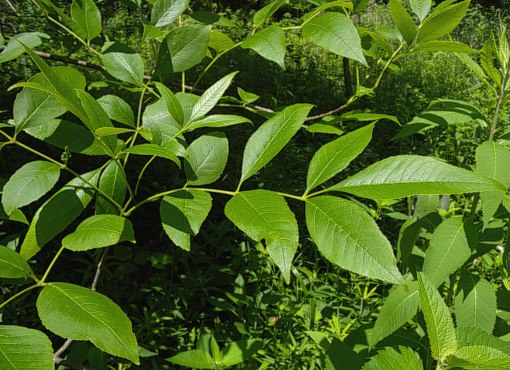
Black ash is very similar to green ash. The leaves have no petiole or stem and connect directly to the leaflet stalk. Black ash usually has 9 or 11 leaves per leaflet while green ash has 7 or fewer. The bark of black ash trees is more flakey than green ash and is more plated than ridged.
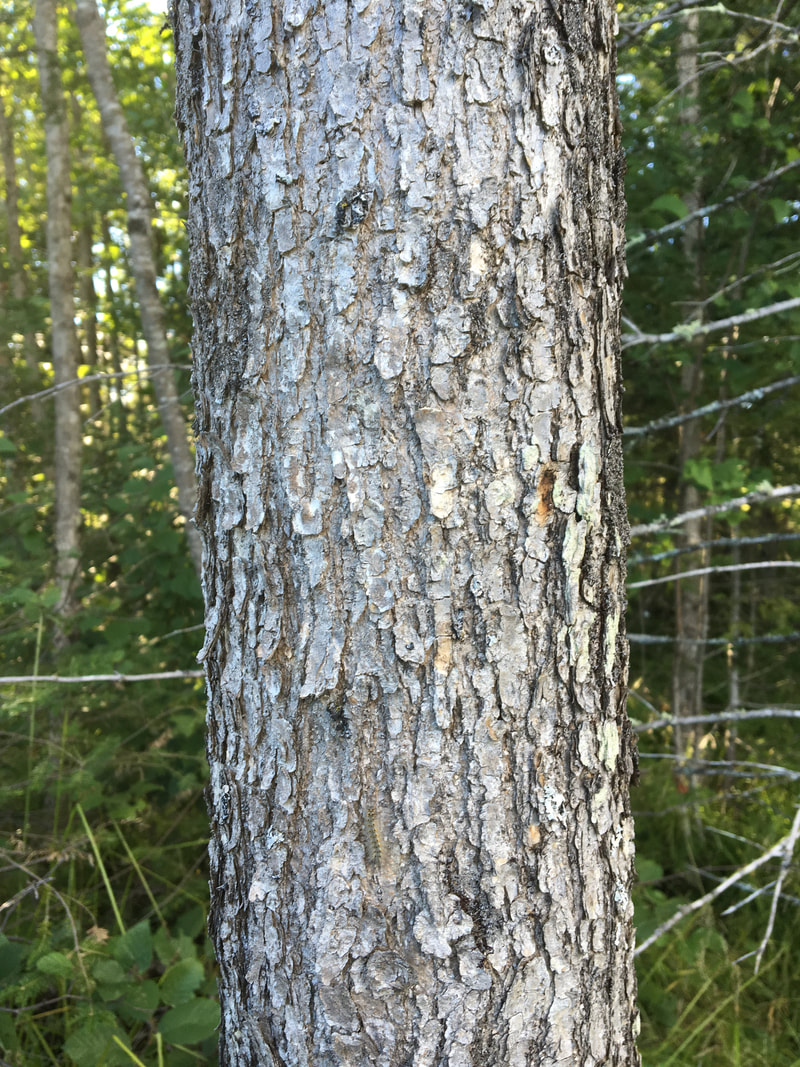
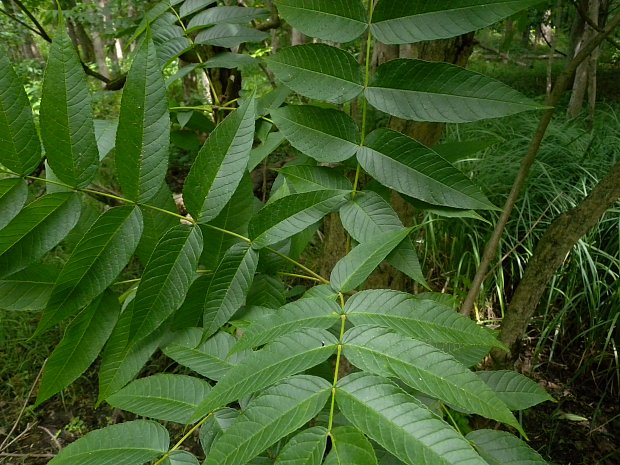
Mountain ash, or rowan, looks very different from Green and Black ash. It grows with either a single stem or many stems and is smaller in height and spread compared to other ash. It has compound leaves that are smaller and toothed and grow in leaflets of 10-17 leaves. It has white clusters of flowers in the later spring and distinctive orange berry clusters. Mountain ash bark starts reddish with pale horizontal dashes across its surface and grays as it ages. The bark will remain smooth throughout its life.
The Symptoms
Lilac ash borer symptoms at a distance can look like natural die back with entire branches wilting their leaves and causing breakages where the woods integrity has been compromised. There will also be holes that are usually on the lower trunk, these can be spotted by frass or sawdust in them or at the base of the tree. You may also be able to see sap leaking from these holes. In May or early June, there may be remnants of the pupal husk sticking out of the hole, as a mature borer exited the tree. The bark where galleys exist can sometime be loose or flaking off and the bark can be discolored
What Can Be Done
- Keep your trees healthy. Trees that are already struggling or damaged are prime candidates for borer infestation, even more so if they are young. Ensure the tree is pruned as necessary, structure is fixed early, ailments are treated quickly, and that the tree gets enough sun, water, and nutrients.
- Borers prefer trees that are out in the open and have good sunlight access on the borer site. This helps the borer larvae stay warm in our long, cold winters. Planting lower canopy cover like shrubs can help shade the lower trunk and make the tree less enticing for borers.
- Monitor your trees health and have early infestations treated. When there are only a few borers the tree can often be treated with insecticide to end the infestation and allow the tree to heal.
- Avoid pruning when the adult borers are active. In Alberta that is in June and July. Fresh cuts will attract borer females to lay their eggs.
- A tree can be treated with insecticide to make its sapwood toxic to wood borer, this is most effective before the infestation starts as a prevention tool. The tree can also be sprayed when the eggs are laid so they are unable to survive after hatching. However, spraying is not very reliable since the eggs can be difficult to see or reach. Alternatively, traps can be put up around ash trees in an attempt to disrupt the moths mating and reduce the population.
- If a tree is severely infested, it should be removed as soon as possible to reduce the borer spread. The debris should be hauled away or burned.
What We Can Do
Kentucky Blue Grass ltd can assess your trees, prune for health, treat ailments, fertilize and water, or remove trees as necessary.
https://tidcf.nrcan.gc.ca/en/insects/factsheet/11751
https://pnwhandbooks.org/insect/hort/landscape/hosts-pests-landscape-plants/lilac-syringa-ash-borer
https://extension.usu.edu/pests/ipm/notes_orn/list-treeshrubs/lilac-ash-borer

Comments are closed